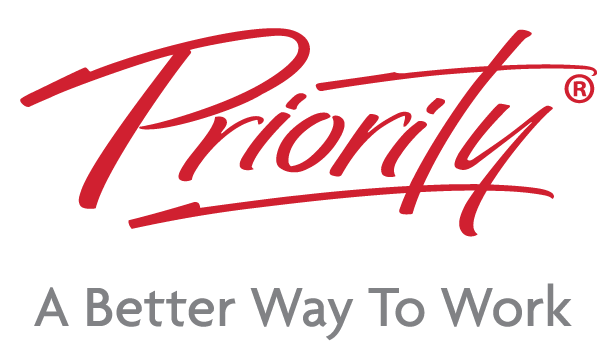Australian workplaces are facing a silent crisis. The Great Australian Burnout is the growing epidemic of workplace exhaustion and mental health strain affecting professionals across various industries in Australia.
It stems from a rise in intense work culture, job insecurity and other external pressures, including economic instability and rising costs of living. Long working hours, insufficient work-life balance and employee fatigue are becoming worrying norms in the Australian workplace. This trend reflects deeper issues around workplace expectations, mental health challenges and the need for more training and awareness around prioritising employee wellbeing.
What is Burnout?
Although not regarded as a medical diagnosis, the World Health Organization defines burnout as a phenomenon that results from “chronic workplace stress that has not been successfully managed.” It’s a mental health issue that’s a cause for concern for many professionals in Australia and all across the world.
WHO lists exhaustion, cynicism relating to a job and reduced professional efficacy as some of the main signs and characteristics of burnout and warns that ongoing burnout can result in a complete depletion of both mental and physical resources.

The Signs and Symptoms of Burnout
Burnout syndrome can be displayed in a range of ways and can be different for everyone. Some common physical symptoms include:
- Fatigue
- Muscle pain
- Stomach issues
- Insomnia
- Sleep problems
- Headaches
- Changes in appetite
Alongside these physical displays, emotional signs of burnout may also be present. These include:
- Difficulty concentrating
- Lack of motivation
- Lowered energy levels
- A feeling of hopelessness
- Cynicism
- Reduced job satisfaction
- Sense of failure and self-doubt
- Feeling detached or isolated
Other mental health issues, including depression and anxiety
According to Headspace, some early warning signs to be aware of and notice in the people around you include feeling helpless at work, unexplained exhaustion and a loss of passion for the things you usually love. If you start noticing these feelings, speak to someone you trust as early as possible.
The Origins of the Great Australian Burnout
In 2021, the working world went through a period of change that was later coined “The Great Resignation”. While the workplace trend wasn’t as prevalent in Australia as it was in the US, the reverberations are definitely still felt here. In fact, we’re going through “The Great Burnout” instead, some researchers suggest.
The numbers don’t lie. The post-pandemic Australian workforce is struggling. A staggering 61% of workers are said to be suffering from burnout, according to Foremind—that’s over 10% higher than the global average. This stark difference highlights unique challenges faced by Australian professionals, including higher job insecurity and long hours.
The main reasons for these statistics are said to be heavy workloads and understaffed workplaces. Both of these scenarios result in additional stress for workers which, if left unresolved, can very quickly lead to employees becoming burned out and unable to function at a high level.
Why Burnout is Bad for Business
Burnout culture doesn’t just impact employees. The Melbourne Business School states that the official figures cost the Australian economy around $14 billion a year based on direct costs such as sick leave. This staggering amount only covers the objective consequences that can be quantified—the actual total is likely to be much higher.
 Research from Creating a Mentally Healthy Workplace found that organisations that create a mentally healthy workplace see improved ROI compared to those businesses that don’t prioritise the mental well-being of their staff.
Research from Creating a Mentally Healthy Workplace found that organisations that create a mentally healthy workplace see improved ROI compared to those businesses that don’t prioritise the mental well-being of their staff.
Richard McAllister, Managing Director of Scalabl, which specialises in organisational change, says too many workplaces are still working as they were in the pre-digital age and need to adapt structures to make them suited for the modern world of work.
“The way we have historically designed the system of work is broken. Our structures and processes were formed and followed based on a pre-digital age,” he says. “There’s a general feeling that if we give people more stuff to do, then they’ll get more done. But the opposite is true and too many good people are becoming victims of that mindset.”
He added: “Imagine working in an environment where everyone around you is upbeat, positive and is hitting their goals. It is infectious. We feed off one another and it’s great.”
Preventing and Managing Burnout
For this burnout epidemic to end, business leaders must acknowledge the issue and pledge to solve it from the top down. Those in charge are the ones with the power and capabilities to make a change.
Providing employees with a space to thrive and do their best work is essential for transforming this culture of burnout we find ourselves in. Managers should take the time to understand how their teams are truly feeling and learn best practices and techniques to ensure a healthy workplace for all, including themselves. Managers and senior staff aren’t immune to burnout.
Consider introducing flexible work arrangements and mental health days, and begin offering training programs that raise awareness about mental well-being. Initiatives like regular check-ins, wellness programs, and workload assessments also go a long way in helping employees feel supported and listened to at work.
On a more immediate level, employees experiencing burnout should control what they’re able to control. Never wait for symptoms to become ‘extreme enough’ before reaching out for help. Beyond Blue found that around 50% of people presenting with acute mental health issues delayed seeking medical advice. However, the earlier symptoms are targeted, the easier the path to recovery. Engage in counselling and focus on eating well, moving your body in a way that feels good for you, and getting enough sleep.
Are You or Your Team at Risk of Burnout?
If you’re feeling exhausted and overwhelmed at work and wondering how to get out of the cycle, allow yourself to believe this won’t be forever. With the right guidance and information, you can take steps to reduce burnout and get back to your productive and positive ways.
Priority Management is your trusted leader in workspace solutions. Our Energy Management course offers evidence-based tools and techniques to help you combat burnout once and for all. Learn to enhance your energy levels, master time management and create a sustainable work-life balance.
If you’re struggling with burnout or any other mental health conditions, help is always available. Call Lifeline on 131114 or Beyond Blue on 1300 224 636. You can also chat with someone online if you feel more comfortable.
